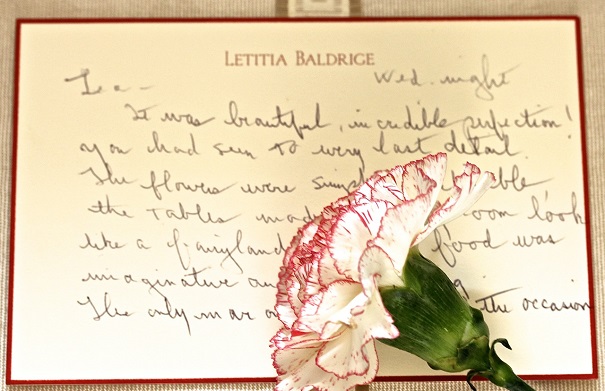Here’s a great example of a thank you note. It was written by Marilyn Monroe and sent to the German Consul General, who had given her a bottle of champagne. It said: Dear Mr. von Feuhlsdorff, Thank you for your champagne. It arrived, I drank it, and I was gayer. Thanks again. My best, Marilyn Monroe This note is original, amusing, and sincere. Nothing more needed to be said, and I bet Mr. von Feuhlsdorff was thrilled right down to his diplomat’s spats. This is the time of year when the thank you note burden falls heavily on our shoulders. You shouldn’t feel guilty if you hate to write them. They can feel like a chore, but there are two kinds of people in the world: those who feel and express gratitude and those who don’t. I’d rather be in the former category, even if it sometimes seems more of a duty than a pleasure. The trick is to think of it from the receiving end, and remind yourself that you were sent a gift or given a meal that took thought, effort, and expense – and that deserves to be acknowledged. The photo accompanying this post is of a note written to me by Tish Baldrige in 2007. I include it because it is a good illustration of the perfect thank you note. She gladdens the heart with her enthusiasm and gratitude (and you’ll notice it is dated “Wednesday evening”, meaning she came straight home from the party and wrote the note while still basking in the afterglow.) What could be more charming? A note like this is a gift in itself, to be savored for years to come. So pull up your socks, grab a pen and paper (or your computer), and reciprocate by creating a little bon mot of praise to the giver. I don’t think it matters if you send a thank you via email, provided it is as sincere and complete as it would be if written by hand. A hand-written note is always better, but email is how people communicate now, and it’s better than not saying thank you at all. Not sending a thank you note creates an awkward situation for the person sending a gift. How do they know you received it, if you don’t acknowledge the gift somehow? It forces the giver into the awkward position of trying to find out if you did receive the gift, without appearing to be fishing for a thank you, and it’s a shabby way to repay someone’s thoughtfulness. 
Here is what makes the best thank you notes:
Never start your note with “Thank you for the….” That is lazy, and leaves you struggling for what else to write after that. It’s best to write in the same way you speak, conversationally, and without formality. Some examples of opening lines:
How can I ever thank you for beautiful (fill in the blank)?
You are so kind to think of me at Christmas!
Last night was the most fun I’ve had in ages. What an amazing evening!
I cannot tell you how much I appreciated the (fill in the blank).
In other words, show enthusiasm and genuine appreciation.
From there, a line or two describing why you liked their party or gift shows sincerity. Then it’s nice to make reference to the thoughtfulness of the individual, or their cleverness in coming up with that particular gift or party theme. If you have any anecdote regarding the gift or the evening, this is the place for it: be charming. For example: “I wore the tie twice last week and I’m wearing it as I write.” Or “I may never forget the sight of that enormous flaming cherries jubilee as you brought it out of the kitchen. It was the most spectacular way to end an unforgettable meal.”
It’s nice to say that you hope to see your benefactor soon, even if there’s no chance of that happening; it indicates that you like them and enjoy their company. And now, say thank you, and express your appreciation for being remembered.
Don’t forget to use a closing phrase that has some warmth or meaning. “Fondly” or “Warmest regards” is much better than “Yours truly”. Think of it as a way to express your personality and leave the recipient with a good feeling about you. There, you’ve made someone else feel good, about themselves and about you. Well worth the effort, I think.




3 Comments